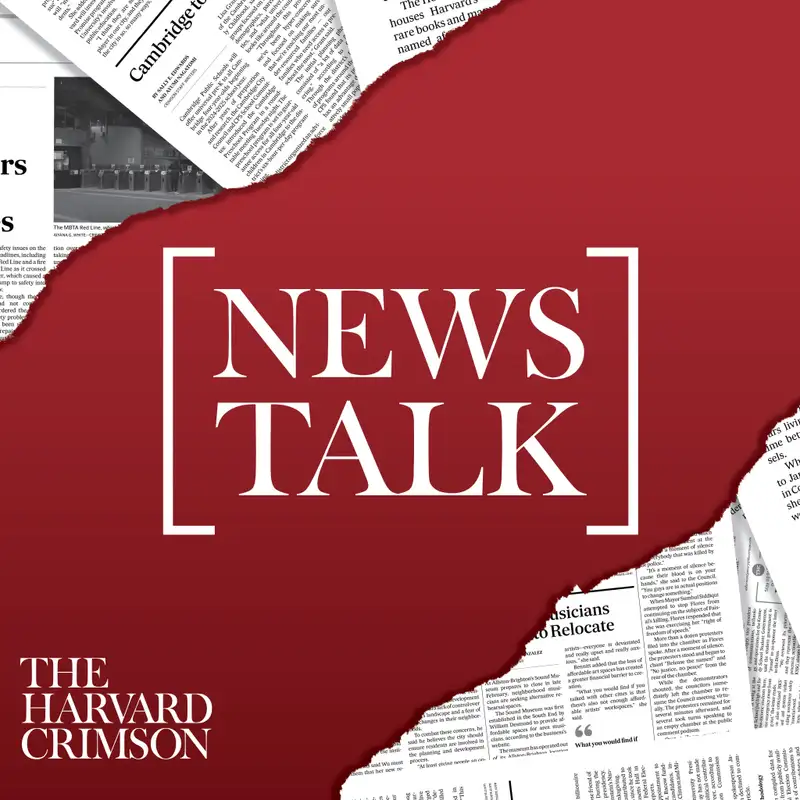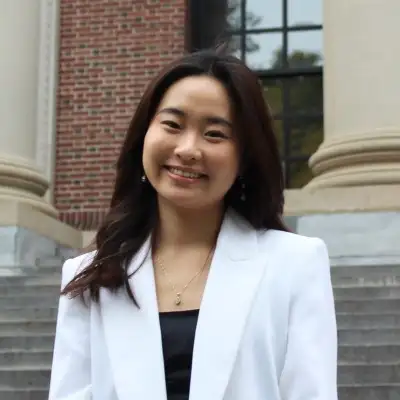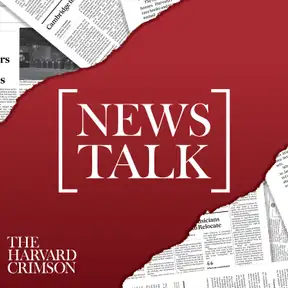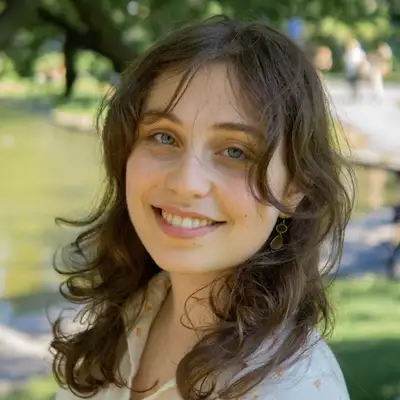
Infighting and Pressure From Above: Inside Harvard’s Legacy of Slavery Initiative
[This transcript was generated automatically by Transistor. Its accuracy may vary.] In 2022, Harvard earmarked $100,000,000 for an initiative focused on making amends for Harvard's ties to slavery. Now that same initiative has faced infighting, a series of resignations, and allegations of attempts to limit the project scope. So how exactly did we get here? From Plympton Street, this is news talk. I'm Yael Goldstein.
Frank S. Zhou:Ever since high school, we've loved reading The Economist. Not only because it helps us broaden our perspective on everything that's going on in the world, but also because it helps us and our friends stay on top of expert analysis.
Yael S. Goldstein:That's why we're so excited to share that free student plans are now available for Harvard Newstalk listeners. Get independent journalism for independent thinkers. Explore videos, audio, articles, podcasts, and more. And be the wiz the world needs.
Frank S. Zhou:Just to give you an idea of what I'm talking about, I've pulled out something that caught my eye this week. How Boston became the safest big city in America, and geothermal energy could outperform nuclear power. The Economist's deeply researched analysis allows me to hone in on what matters the most.
Yael S. Goldstein:And if you're not a student, The Economist offers monthly, annual, and multiyear plans, some with a free trial.
Frank S. Zhou:Go to economist.com/harvardnewstalk and sign up today. That's economist.com/harvardnewstalk.
Annabelle M. Yu:Hi. I'm Annabelle Yu, and I cover Cultural Institutions and Administration.
Neil H. Shah:Hi. My name is Neil H. Shah, and I cover the Faculty of Arts and Sciences for the Harvard Crimson.
Yael S. Goldstein:Thank you so much, Annabelle and Neil, for joining me on the podcast today. Super excited to have you here. So you both recently put out this fascinating piece on the Harvard Legacy of Slavery Initiative, specifically some of the internal tensions within the program and the alleged pushback about the scope of the work. There's certainly a lot to cover here, but I'd love to know what exactly is the main takeaway of this piece.
Neil H. Shah:Definitely. In 2022, Harvard announced an unprecedented commitment to address its historic ties to slavery, one that came with a $100,000,000 commitment and a promise that it would make good on 7 recommendations made by a landmark report. However, according to current and former staffers of the initiative, they've found that at times they're questioning Harvard's commitment to that promise. They alleged that the university has at times prioritized public image over doing the work to its fullest, and some alleged that there has even been pushback from university administrators over the scope of their work.
Yael S. Goldstein:Alright. So you mentioned this all began circa 2022, so I think maybe we should start there. Can one of you give me a brief overview of the, sorta, genesis of this initiative?
Annabelle M. Yu:So as you said, it does start in 2022 when former Harvard President Larry Bacow released a research report detailing Harvard's history tied to slavery, and it included many university affiliates who owned enslaved individuals and enslaved individuals who worked on Harvard's campus, and this report also announced 7 recommendations to address this history. Along with this report, president Bacow announced the Harvard and the Legacy of Slavery Initiative that was to implement these recommendations from forming partnerships with descendant communities and forming partnerships with HBCUs. In line with those recommendations, there were subcommittees of the larger initiative in order to implement them.
Yael S. Goldstein:I'm curious whether Harvard was looking to other universities and other initiatives to sort of develop this report and to develop these recommendations. Do you know if they were receiving inspiration from any other institutions?
Neil H. Shah:The university was definitely looking outside for some inspiration. For example, when the university started building out its partnerships with historically black colleges and universities, they brought on former Brown University president Ruth Simmons to be an adviser to the Harvard president on the subject. Simmons was also formerly the president of Prairie View A&M University, a Historically Black college and University. So the university was looking outside to kind of get guidance on how to do this best.
Yael S. Goldstein:Right. So then they had access to outside expertise, but, what projects did they ultimately settle on to actually constitute the internal structure of the initiative?
Annabelle M. Yu:Yeah. So one of the larger projects that began under the initiative was the Harvard Slavery Remembrance Program. And this program began in order to address Harvard's 4th recommendation in its report to identify and support direct descendants of enslaved individuals. And whenever the university launched this program, it announced that Richard Cellini was to be the head of the program.
Yael S. Goldstein:Did Richard Cellini have any prior experience with working for initiatives like this?
Annabelle M. Yu:Yeah. So Cellini actually came from the Georgetown Memory Project, which was a nonprofit organization that he founded in order to identify descendants that came from enslaved individuals that were sold in order to fund Georgetown University.
Neil H. Shah:Right. Cellini was known in these genealogical research circles long before he came to Harvard. He also started an initiative called the 10,000,000 Names Project, which seeks to identify the 10,000,000 individuals who were enslaved in what would eventually become the United States or the United States once the founding happened, and that initiative is already known to people at Harvard. Several Harvard affiliates, including former overseers and professors, sit on its advisory board, so he wasn't a completely unknown quantity coming into this work. Okay.
Yael S. Goldstein:So we have Cellini who's, you know, generally perceived to be a seasoned researcher in this regard. Who are some of the other figures who are important to the structure of the initiative, and how do they figure into into the various projects?
Neil H. Shah:So at the very top, you have vice provost for special projects, Sarah Bleich. She is a professor at the School of Public Health who rejoined the university in 2022 after a brief stint in the Biden administration, and her role as Vice Provost for Special Projects is specifically to oversee this legacy of slavery initiative and to make sure that it's done to completion. In addition, the initiative has an executive director who reports directly to her. That position is currently vacant after the former executive director resigned in June.
Annabelle M. Yu:Another large project under the initiative is the memorial project, which was created in order to address another one of the recommendations. And its main goal is to create a physical memorial on Harvard's campus that commemorates formerly enslaved individuals. And this project has a committee that was formerly headed by English professor, Tracy Smith, and the director of the Carpenter Center, Dan Byers. However, they both resigned this past summer and wrote a resignation letter where they expressed that they felt that they were being rushed in their work by the office of the vice provost.
Yael S. Goldstein:So you've mentioned a series of former members of the initiative's leadership. So I'm wondering if you can sort of take us through why, in fact, these members of leadership have resigned.
Neil H. Shah:So in May, I was informed by a source that Tracy Smith and Dan Byers would be resigning from the top of the memorial project committee because they were concerned that university administrators had been rushing them to publicize their progress. Then a few days later, I obtained, and we published at the Crimson a copy of their resignation letter. It was a scathing critique of how the administration had handled this work. In it, they said that the office of the vice provost had, quote, cautioned, end quote, them to, quote, delay and dilute their efforts to reach out to descendants, and that's a pretty serious allegation. In addition to that, the Memorial Project Committee alleged that in the past December, so 2023, they were rushed to put out a request for qualifications for artists who wanted to submit work for the memorial despite the fact that at the time, they felt it wasn't ready.
Yael S. Goldstein:And what did the university say to those allegations?
Neil H. Shah:The university issued a statement in which they said they took very seriously the concerns raised by Smith and Byers. Sometime later, the university created an advisory council of subject matter experts who would guide the initiative through this work.
Yael S. Goldstein:So the major concern here seems to be that the university is pushing leaders in in this initiative to move along the work perhaps, at the expense of the integrity of the project, and I'm wondering if if this criticism has manifested anywhere else within the leadership structure.
Neil H. Shah:Definitely. I spoke to several current and former affiliates of the initiative who alleged that there was, at times, an unhealthy ethos of speed and that they felt that they were being pressured to put out press releases when they thought they weren't ready. Richard Cellini, the remembrance program director we were just speaking about, wrote in also a scathing email, this time a statement to The Crimson, that he believed that the universe was trying to encroach on the scope of his work and that Vice Provost for Special Projects Sarah Bleich had explicitly told him at times to, quote, not find too many descendants. Cellini put these complaints in writing in July 2023 February 2024 to Harvard's Office of the General Counsel and President Garber's Chief of Staff, respectively. The University vehemently denies either of these allegations.
Neil H. Shah:They say that Cellini was never instructed at any point to limit the number of descendants found, and it's unclear what was said given that the allegations are about a verbal meeting that The Crimson, unfortunately, did not have access to a recording of, but it's clear that these allegations do exist, and other people do feel the same way that Smith and Byers did.
Yael S. Goldstein:So how have these allegations impacted the relationship between, Cellini and his boss, Vice Provost Sarah Bleich?
Neil H. Shah:It's unclear what came from these exact complaints, but Cellini and Bleich are not on good terms. In January 2024, Bleich told Cellini that he was rude and abrasive. And since the spring, Cellini and Bleich have avoided taking meetings together despite the fact that according to a university spokesperson, Bleich is Cellini's direct supervisor. Cellini has, at times, asserted that he feels he reports directly to the Harvard Corporation, the university's top governing boards, especially given the nature of the complaints he launched against Bleich.
Yael S. Goldstein:So the picture you're painting for me is, you know, 2 very central figures in this initiative in conflict. Is that correct?
Neil H. Shah:You're absolutely correct, and they're not the only ones. In June, Roeshana Moore-Evans , the former executive director of the Harvard and the Legacy of Slavery Initiative, resigned from her position. At the time, according to a person familiar with the situation, her departure was negotiated by an HR representative. Let's rewind a few months to how we got there. In March 2024, Moore-Evans filed a former HR complaint against Bleich, alleging several personal and professional differences, including the fact that she had micromanaged the work and that she was hindering the work of the initiative.
Neil H. Shah:This was relayed to The Crimson by 2 people familiar with the situation. Then at some point in the spring, Moore-Evans and Bleish avoided taking in person meetings together, and, you know, eventually, the complaint was dismissed, and at the end of it all, Moore-Evans was the one that ended up leaving. According to 3 affiliates of the initiative, the relationship between Moore-Evans and Bleish had been visibly tense for quite some time, even well before that HR complaint was filed as early as the fall of 2023. And so the total picture here is you have a vice provost with 2 people who directly report to her. 1 is the executive director of the initiative that is being overseen, and the other is the head of the research team for that initiative.
Neil H. Shah:And between this triangle, you have an HR complaint, ethics complaints to the Office of General Counsel, and overall just some bad vibes.
Yael S. Goldstein:Alright. Sarah Bleich has been on on the receiving end of several allegations and HR complaints. I'm wondering, what does she have to say about all of this?
Annabelle M. Yu:After many instances of trying to reach out to Vice Provost Bleich, The Crimson was only able to get a statement from her through a university spokesperson, and this statement simply said that she is, quote, looks forward to the work they have ahead of them. In addition to Bleish's statement, President Alan Garber also released a statement putting his support behind Vice Provost Bleish, saying that he is confident that she can, quote, lead her efforts with vision and commitment.
Yael S. Goldstein:So based on our discussion, it seems like these personnel conflicts are mostly leadership scuffles. Have any of these issues manifested elsewhere in the initiative?
Neil H. Shah:For the most part, you're you're right. These are leadership scuffles. For instance, the the researchers on Cellini's team in the Remembrance Program, they have, for the most part, been isolated from the tension between Cellini and Blaish. For instance, one researcher on Cellini's team in the Harvard Remnants Program told me that, for the most part, they didn't know what the nature of the conflict was like between Cellini and Bleich. All they knew was that Cellini had at times pushed for defending the scope of the work and to make sure that the remembrance program was able to do its work to the fullest, but the researcher wasn't really aware of what that meant.
Neil H. Shah:However, there were people who did feel like, you know, the tension from leadership did trickle down. For instance, Rayshauna Gray , an executive assistant to Bleish and Moore-Evans from February to September 2023 said that at times, she felt that she was condescended to talk down to or snapped at unfairly by members of leadership, including, especially, she said, by Roshana Moore-Evans .
Yael S. Goldstein:Alright. So beyond the teams working in the initiative, I'm wondering how did these personnel complex impact project timelines?
Annabelle M. Yu:Well, in the case of the memorial project, these personnel issues and resignations definitely did have an impact on the timeline. Originally, artists were given a a deadline of February 20th to submit designs that were going to be reviewed by Tracy Smith and Dan Byers, the former co chairs, for the physical memorial that they were planning on constructing. This timeline ended up being pushed back after they resigned. Artists alleged that this was not properly communicated to them. In an interview, one artist who submitted their design to the committee said that they didn't receive an email notifying that this timeline was going to be pushed back until July.
Annabelle M. Yu:And Byers and Smith had resigned in May. So there's just this lag between what was actually going on within the committee and what was being communicated to the artists.
Yael S. Goldstein:Why were there timeline changes in in general?
Neil H. Shah:Well, in in their resignation letter, Smith and Byers wrote that they didn't feel prepared to review the submissions at the time that they were even soliciting them. They felt that they'd been pressured into releasing that request for submissions at a time when they weren't ready, and they wanted to do more outreach to members of the community before they made any sort of decisions about what the memorial would look like. And so there's frustration on both sides here. On one hand, you have Smith and Byers saying they didn't feel ready to do what they had to do. And on the flip side, you know, the the artist told me that they were deeply frustrated that when Smith and Byers did eventually resign, that they were surprised that they had to learn about that through the Crimson and not some transparent university process.
Yael S. Goldstein:Have there been other instances with respect to the timeline where members of the initiative or people looking on have thought that maybe the university has wanted to jump the gun a little bit?
Neil H. Shah:Sure. Yeah. I mean, several current and former affiliates told me that there were times at which they felt the university was prioritizing, you know, speed over substance. For instance, in the fall of 2023, the university brought on a marketing agency called Proverb to help come up with, you know, communications, naming, branding strategy for the initiative. To do something like that isn't unheard of for an initiative of the size and sensitivity of the Legacy of Slavery Initiative.
Neil H. Shah:However, some affiliates said they felt miffed that the university was looking to think about these things before there was even a coherent strategy for dissent and outreach. In addition, one affiliate told me they were critical of how much the university was investing into that kind of work. You know, the university spent tens of 1,000 of dollars on Proverb. And though that didn't come out of the endowment, it was it came out of separate university funds.
Yael S. Goldstein:So, obviously, there have been questions and concerns about the timelines of certain projects. But I'm wondering, are are there any projects that the initiative considers relatively successful?
Annabelle M. Yu:So the initiative has done a lot of work in building partnerships with HBCUs, which is also one of the recommendations that it committed itself to. And this past summer, the university actually hosted the Du Bois Scholars Program, which invited students from HBCUs to do research here over the summer. In an interview with a law professor from Howard University, he actually complimented the initiative's efforts to build these partnerships with HBCUs, and many others have also expressed positive views for these efforts to build these partnerships. So the initiative has made progress in implementing some of their recommendations.
Yael S. Goldstein:So with the challenges and the successes we've discussed in mind, what can we expect going forward?
Neil H. Shah:The university is actively trying to right the ship. They announced an advisory council to guide the implementation of the recommendations, and they said it was in response to concerns that have been raised by the previous co chairs of the Memorial Project Committee. In addition, they announced new co chairs for that memorial project and have been able to get that committee back on track. And, you know, President Garber, in a statement, wrote that he feels the university is just as committed to this work as it was when it started to embark on it. And so, you know, I I think we'll see the university try to push forward.
Neil H. Shah:As for the tensions inside the initiative, one affiliate told us that they believe Vice Provost Bleich has time to right the ship, but that the initiative is to act fast, and that they have to recognize the troubles and the chaos of the last year, and move forward from that and find a way to address it.
Yael S. Goldstein:Thank you so much, Annabelle and Neil, for breaking down your story on the Harvard Legacy of Slavery Initiative.
Neil H. Shah:Thanks so much for having us.
Annabelle M. Yu:Thank you so much.
Yael S. Goldstein:Newstalk is co hosted by Yael S. Goldstein and Frank S. Zhou. This episode was produced by Yael S. Goldstein and Frank S. Zhou. Our multimedia chairs are Julian J. Giordano and Addison Y. Liu.
Yael S. Goldstein:Our Associate Managing Editors are Claire Yuan and Elias J. Schisgall, and our Managing Editor is Miles J. Herszenhorn. Our president is J. Sellers Hill. From 14 Plympton Street, this is Newstalk.
Creators and Guests



